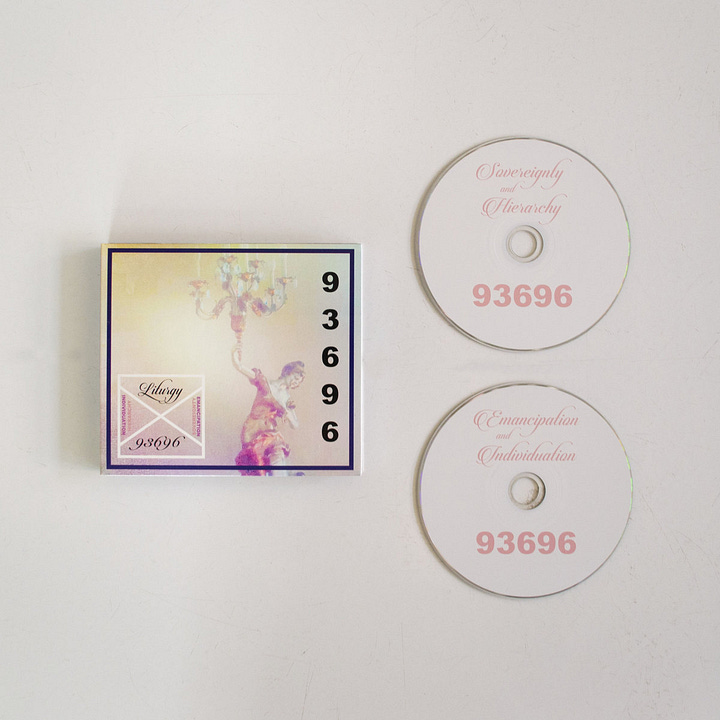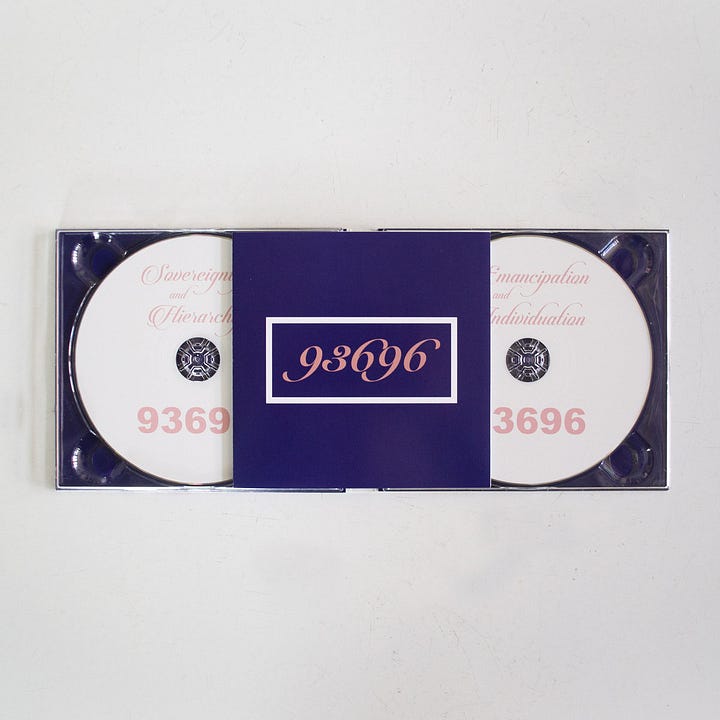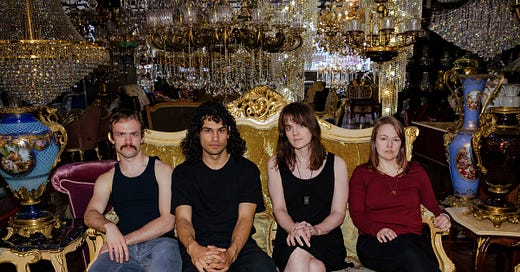Neuguitars 2024 #1: The power of metal ceremony; do you believe in Liturgy's maximalist Paradise?
Talking and thinking about "93696" by Liturgy
Metal is a curious musical style characterized on the one hand by an extreme conservatism towards the canons of the genre, on the other by centripetal forces that generate an infinite series of micro genres, complex to explore and identify far from the main trends. Liturgy came into my range first with the interview published on Bancamp on the occasion of the release of their latest album “93696” ( “93696” is Liturgy at Their Most Maximalist ) and then with the interview with the transgender leader Haela Ravenna Hunt-Hendrix on the Tone Glow blog ( Tone Glow 114: Haela Ravenna Hunt-Hendrix (Liturgy) ).
Theoretical even before being creative, (I also recommend a visit to Hunter Hunt-Hendrix | Substack is worth it) the guitarist/singer had highlighted herself with her essay "Transcendental Black Metal Manifesto", presented as part of the "Hideous Gnosis Black Metal Symposium" held in Brooklyn in December 2009. The author's thesis, argued with a style between the imaginative and the assertive, which already showed the trademark that we find abundantly in “93696”, invited us to cut the umbilical cord with the tradition of Scandinavian black metal (renamed "Hyperborean" and considered the apogee of extreme metal) to establish an "authentically American" trend ("the America celebrated by Aaron Copeland's Appalachian Spring or Ornette Coleman's Skies of America […], a celebration of the hybrid and of creative evolution"). The objective is to override the deadly Nordic nihilism through the affirmative "rhinihilization" that inspired the name of the newly released album: "Our affirmation is a refusal to deny".
True deus ex machina behind the project, Haela Ravenna Hunt-Hendrix released an album of electronic music in 2016, an EP entitled Immortal Life, which was released only two years later on vinyl and CD. The short work of just 14 minutes shows a very raw, immature and exciting black metal, which however reveals some interesting ideas such as the use of the Burst beat technique (here played by a drum machine) which compared to the traditional blast beat slows down and increases exactly like the cycle of a wave. This type of drum line, together with guitar chords played mainly on very high notes, would become a trademark of the band.
https://youtube.com/playlist?list=PL1TY1_GHSR7hOmFzO66KagGTxjO-R1jhN&si=ySOFsV0sTjADrbFj
In 2020 he came out as transgender, continuing his activity as a YouTuber in parallel, where she discusses religious themes in depth.
from 2009 onwards, formed as a group, Liturgy produced four other albums:
Renihilation (2009)
Aesthethica (2011)
The Ark Work (2015)
H.A.Q.Q. (2019)
Liturgy also produced, again in 2020, “Origin of the Alimonies”, a work which, as it is written on their bancamp website: “is by far Liturgy's most meticulous and radical statement, pushing their characteristic synthesis between black metal, minimalism , experimental club music, and 19th–century romanticism to new extremes. Exploring microtonality, free improvisation, polymetric structures and Richard Wagner's ideas of musikdrama and leitmotif, Hunt-Hendrix employs her unique “burst beat” technique to bind together the rhythmic signatures of metal, experimental club and classical music in the service of speech patterns and narrative flow.”
A musical, intellectual and rhizomatic activity decidedly far from the metal canons I was used to until now and which finds a decidedly even more interesting and mature form in "93696", their new double album produced in 2023 with Thrill Jockey.


An album that continues in the wake of the transcendental black metal that Liturgy has set to follow since the first moment of its discography. Even avoiding all the metaphysical and eschatological discourses on kabbalah, idealism, pantheism and religion, it is impossible not to be struck by the opening of the first CD, where the delicate choral exercise of Daily Bread quickly gives way to the furious assault of Djennaration. Then when the first scream wildly bursts into the sound space, the sensation of disorientation becomes more and more exciting: what other metal band would accentuate the entrance of their voice with a carpet of flutes, then descend into an electronic interlude, and then immediately return to vandalize the listener's ears with his furious outbursts?
The beauty of "93696", however, lies not only in the complex mix of styles on which each single piece is built, but also in the way in which these continuous interpenetrations reappear within the compositions in a totally organic way, as if this were the most normal way to write a black metal record. “93696” is an all-encompassing experience but, thanks to the skilful and measured use of interludes and its shorter numbers, it never feels tiring; to the point of allowing, in his second album, two monstrous tours de force such as the title track and Antigone II, songs with an Olympic length that ride on death-doom slowdowns, complex harmonic figures, flourishes of ethereal electronics and an incessant desire to do not close yourself off in a well-defined genre.
Recorded with Steve Albini (and you can hear it) in late 2020, “93696” was constructed with an easily noticeable surplus of pandemic time, and sounds like an organic and organized attempt to integrate every aspect of Liturgy's previous discography into one wider vision. If for black metal fans the vision of Haela Ravenna Hunt-Hendrix will never qualify as true metal, precisely because of this wide cosmogony of different musical forms (and thoughts) that merge in her music, it cannot be denied , however, that Liturgy's music remains unique and still offers a radically new potential for heavy metal rock: those guitars with those powerful and cutting riffs could take us to the maximalist paradise started by Glenn Branca and Rhys Chatam.




